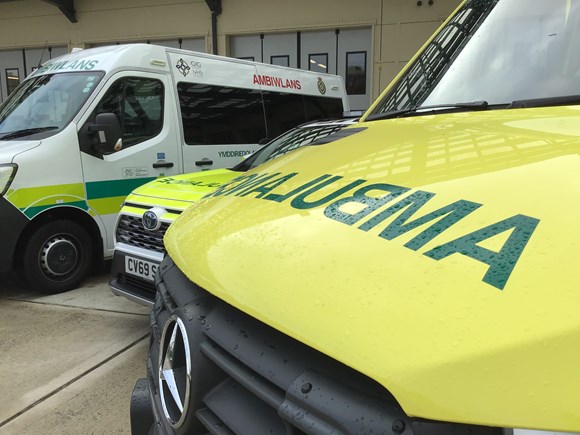Questions have been raised over whether the Welsh Ambulance Service should keep chasing the eight-minute target for reaching immediately life-threatening “red” calls.
It comes after senior officials revealed changes will be introduced to how the service responds to patients later this year.
The ambulance service currently has a target of responding to 65 per cent of urgent calls within eight minutes.
However, the national response time target has not been met since July 2020, with the most recent figure for April this year standing at 48 per cent.
The logic behind the goal was challenged by the chair of the ambulance service during a meeting of its board held on May 30.
Colin Dennis said: “What strikes me when you look at what we do is that we are under-performing.
“We’re not meeting 65 per cent in eight minutes but we are meeting 65 per cent in ten minutes. Is that two-minute time difference significant?
“I don’t have the answer to that, but I think there are questions that need to be asked around that very fundamental measure.
“We’re chasing a target which has its history going way back and the logic may have been flawed even then.
“There will be an assumption by those people who are measuring us, particularly Welsh Government and elsewhere, that hitting 65 per cent in eight minutes is really important. It might be, but it might not.”
The Welsh Ambulance Service previously made major changes to its response model in October 2015 as part of a trial, which was later made permanent by then-Health Minister Vaughan Gething.
It saw time targets scrapped for all but the most serious calls, categorised as “red”.
It also saw calls relating to some conditions, including suspected strokes and heart attacks, downgraded into the “amber” category.
It was argued at the time that it would allow ambulance crews to be prioritised for calls to immediately life-threatening conditions such as cardiac arrests.
During the board meeting, the service’s chief executive said he was concerned trying to reach red calls in eight minutes was hampering work to improve the quality of care provided to patients.
Jason Killens said: “During this month to date, we’ve already received about 1,000 more red calls than for this month last year.
“We have responded to about 100 more red calls in eight minutes than last year, but the percentile was ten per cent down.
“It is so important that we, as well as the public and our commissioners, are looking at the numbers.
“The timeline that we’ve been doing clearly illustrates that despite all our best internal efforts, it is not shifting the dial on the percentile rates.
“I am concerned that it distracts from the effort we should place into our organisation’s efforts to improve safety and quality.”
Mr Killens said measures taken to improve red call response rates had included an increase in staffing levels, shift pattern changes and examining how the service dispatches ambulances.
However, he said these had failed to make a significant impact, with the focus now moving towards further alterations to its response model.
He said: “Many colleagues on the board will remember that Wales was the first ambulance service in the UK to move away from time being the total measure of success and in producing quality indicators.
“Whilst time continues to be important for many patients and is an added measure of patient satisfaction, clearly the quality of what we do and the care we provide once we arrive on the scene is also increasingly important.
“We’ll be bringing forward the next phase later this year, which will see some changes made to how we manage activity and introduce a clinical intervention and assessment much earlier in the patient’s journey.”




